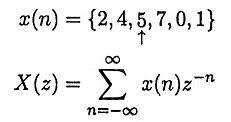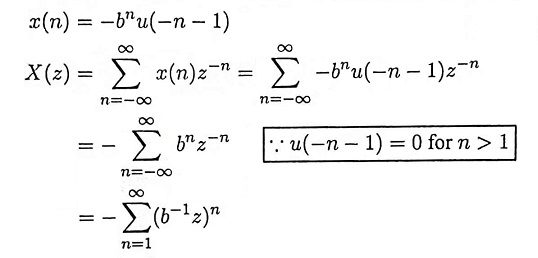Z Transform Interview Questions and Answers:
1. Define the z-transform.
Ans. The z-transform of a discrete-time signal x(n) is defined as

where z is a complex variable. In polar form z can be expressed as z = rejω, where r is the radius of the circle.
2. What is meant by Region of convergence?
Ans. The region of convergence (ROC) of X(z) is the set of all values of z for which X(z) attains a finite value.
3. Explain the linearity property of the z-transform.
Ans.
If Z{x1(n)} = X1(z) and Z{x2(n)} = X2(z) then
7. Explain the convolution property of the z-transform.
Ans.
If Z{x1(n)} = X1(z) and Z{x2(n)} = X2(z), then
8. Explain the multiplication property of the z-transform.
Ans.
If Z{x1(n)} = X1(z) and Z {x2(n)} = X2(z), then

9. State parseval’s relation in z-transform.
Ans.
If x1(n) and x2(n) are complex-valued sequences, then

10. State the initial value theorem and the final value theorem.
Ans.
Initial value theorem: If x(n) is causal, then

Final value theorem: If x(n) is causal, Z[x(n)] = X(z), where the ROC for X(z) includes, but is not necessarily confined to |z| > 1 and (z — 1) X(z) has no poles on or outside the unit circle, then

11. What are the properties of Region of convergence?
Ans.
- The ROC is a ring or disk in the z-plain centered at the origin.
- The ROC cannot contain any poles.
- The ROC of an LTI stable system contains the unit circle.
- The ROC must be a connected region.
12. Determine z-transform and ROC of the finite-duration signal.
Ans.

We have

substituting the sequence values we get

ROC: entire z-plane except z = 0 and z = ∞
13. Find the z-transform and ROC of the signal
Ans.

The series converges if |b-1 z| < 1 i.e., |z| < b

14. Find the z-transform of (a) A digital impulse (b) a digital step.
Ans.
(a)Since x(n) is zero except for n = 0, where x(n) is 1, we find X(z) = 1
(b)Since x(n) is zero except for n ≥ 0, where x(n) is 1, we find

15. What is the relationship between z-transform and DTFT?
Ans.
The z-transform of x(n) is given by

where z = rejω (2)
Substituting Eq. (2) in Eq. (1) we get

The Fourier transform of x(n) is given by

Eq. (3) and Eq. (4) are identical, when r = 1. In the z-plane this corresponds to the locus of points on the unit circle |z| = 1. Hence X(ejω) is equal to X(z) evaluated along the unit circle, or

For X(ejω) to exist, the ROC of X(z) must include the unit circle.
16. What are the different method of evaluating inverse z-transform?
Ans. The inverse z-transform can be evaluated using several methods
- Long division Method
- Partial fraction expansion Method
- Residue Method
- Convolution Method
17. Define system function.
Ans. Let x(n) and y(n) is the input and output sequences of an LTI system with impulse response h(n). Then the system function of the LTI system is defined as the ratio of Y(z) and X(z), i.e.,

where Y(z) is the z-transform of the output signal y(n) and X(z) is the z-transform of the input signal x(n).